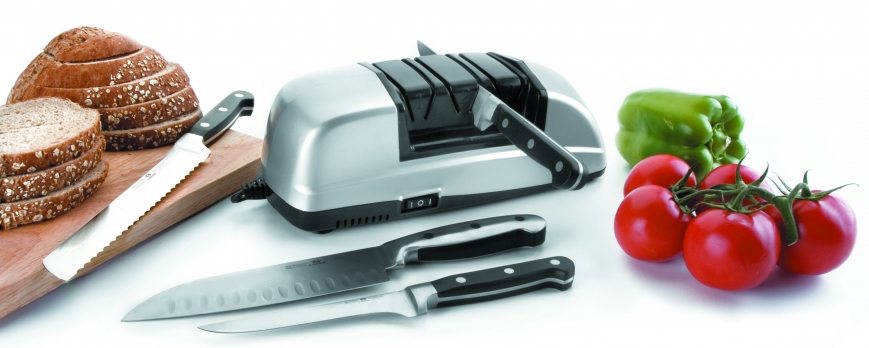No products
Prices are tax included

Kitchen Knives
If there is an irreplaceable piece in a kitchen is the knife. The preparation of (almost) any food needs a good cutting instrument. If any other cooking utensil our quality is important, in the case of the knives is critical; its use will be daily, so it pays to invest in durable and comfortable pieces.
The hardness of the blade, a comfortable handle and a well-established edge ensure a clean and safe cut in food preparation. Remember that a sharp blade is certain: their movements are more accurate and need less pressure; a dull knife requires more force, it is easier for the blade to slip or twist and cause a cut.
The hardness of a knife is normally indicated by Rockwell, expressed through a series of digits such 54HRC. The greater the amount expressed, the harder the material. The metal used in kitchen knives are usually made of stainless alloy steel other materials that improve their performance: chromium, molybdenum (durability and wear resistance), vanadium (prevents corrosion) ... and usually have a hardness between 54-58 . Very hard knives have a drawback: it is difficult to settle them and sharpening.
Each food has a different size and consistency; why there are adequate knives for different tasks: the wavy edges are suitable for food with hard exterior and soft interior, the straight edges to make clean cuts, peel ... If you are unsure of which requires, start acquiring a knife Utility and go adding pieces as you discuss your cooking and eating habits.
In Lacor will find a wide variety of metal knives:
• Knife Chef: De leaved, rigid, slightly curved and smooth edge. multipurpose; weight balance between the blade and the handle makes it suitable for a highly effective at cutting, cutting and chopping on a table rhythmic movement, rolling,.
• Knife cuisine: Other multipurpose, narrower than the chef's knife blade; suitable for cleaning, cutting and chopping vegetables.
• patatero knife or peeler: Small and light, smooth edge and acute end, easy to handle. Suitable for peeling vegetables, fruits and tubers.
• Ham knife: long, thin knife with straight edge for cutting ham or large pieces of meat.
• Boning knife: thin with plain edge blade and characteristic curve. Suitable for scraping meat off bones.
• Bread knife: long sawn to break the crust of bread without crushing and slicing blade.
• Knife fish - fileteador: Leaf long, thin and flexible to cleanly get steaks.
• Knife frozen
• Santoku Knife: From broadleaf utility knives are of Asian cuisine; air chambers created by the honeycomb edge prevent food from sticking to the sheet, facilitating the cutting of very thin slices.
• loins Knives
Besides metal knives, Lacor offers a line of ceramic knife whose blade is made of high strength zirconia: 87 RHC. It is light and easy to use parts with non-slip ergonomic handle and innovative design. Ceramic knives have many advantages: its edge, long life, minimize the oxidation of foods cut. Its disadvantage, fragile leaves if shocks or falls; also be used on wooden cutting boards and avoid use with bones or frozen foods.
And if you're a good consumer of salads and leafy vegetables, we recommend that you see on our site the knife cuts vegetables. Made of plastic material prevents oxidation and loss of nutritional value produced by cutting the leaves of vegetables with high water content. With minimal investment which also prevent deterioration of their metal edge knives.
Dejar un comentarioLeave a Reply
Blog categories





